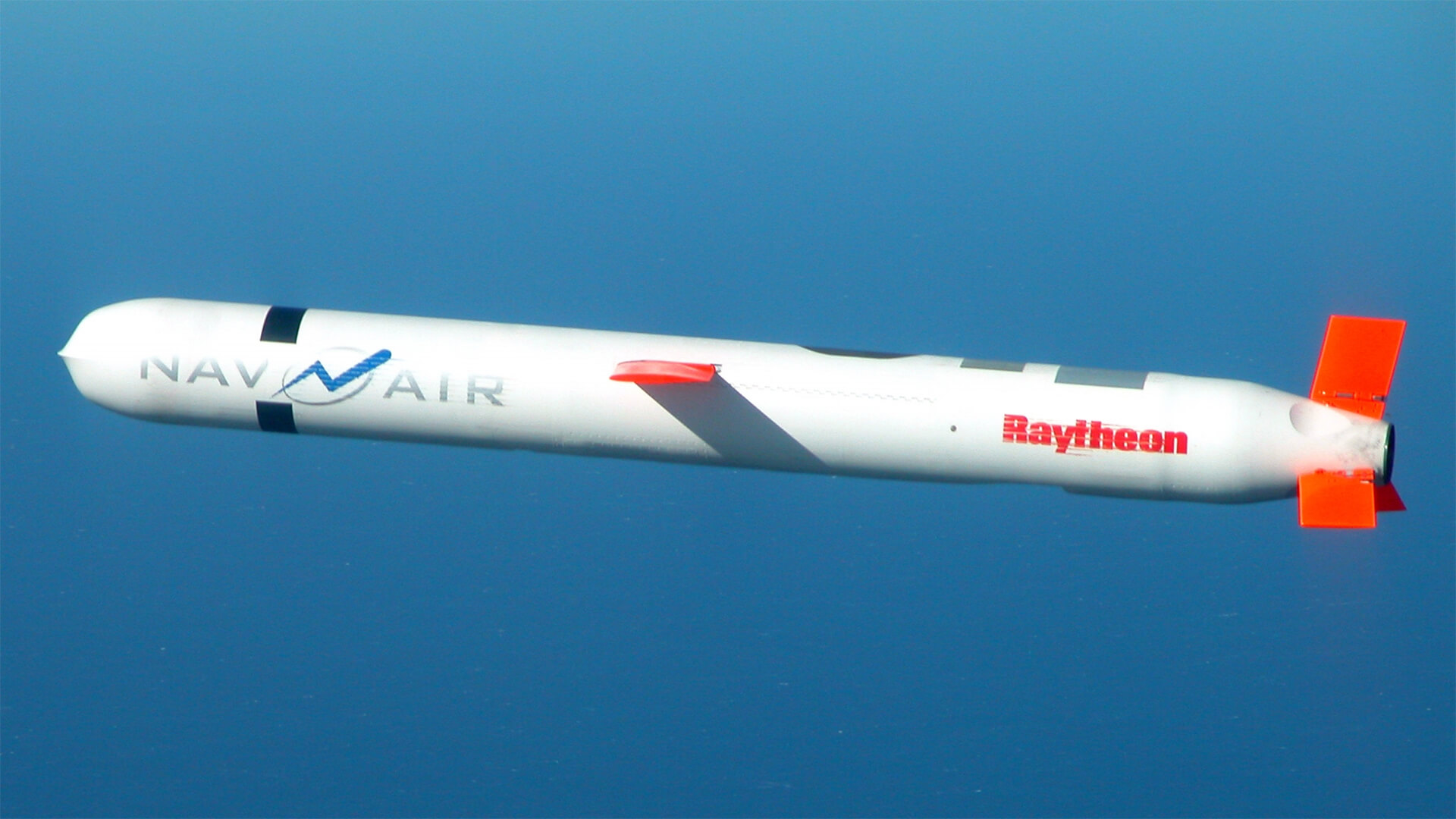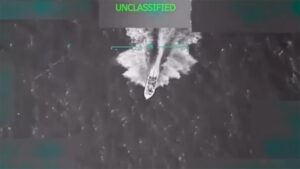Well, it looks like the Germans are going to be celebrating Christmas in July. That’s due to the US and Germany’s decision made at the NATO conference to redeploy American mid-range weaponry to Germany. And yes, this hasn’t happened since the Cold War for…historic reasons.
Russia is the country to blame here. They’ve been violating arms treaties for the past 15 years, so the US got fed up and bailed on the INF treaty five years ago; this triggered the redeployment process. There are a whole boatload of reasons that this is happening, but defense against the Russians tops the list.
While the Russians may have opened this can of worms, the fallout isn’t going to be confined to them. Since the treaty that barred the US from taking actions globally is now kaput, the Chinese will be feeling some of the heat too. You can expect to see some intermediate-range American weapons in close proximity to China and throughout East Asia, which should help limit China’s global economic influence.
Here at Zeihan On Geopolitics we select a single charity to sponsor. We have two criteria:
First, we look across the world and use our skill sets to identify where the needs are most acute. Second, we look for an institution with preexisting networks for both materials gathering and aid distribution. That way we know every cent of our donation is not simply going directly to where help is needed most, but our donations serve as a force multiplier for a system already in existence. Then we give what we can.
Today, our chosen charity is a group called Medshare, which provides emergency medical services to communities in need, with a very heavy emphasis on locations facing acute crises. Medshare operates right in the thick of it. Until future notice, every cent we earn from every book we sell in every format through every retailer is going to Medshare’s Ukraine fund.
And then there’s you.
Our newsletters and videologues are not only free, they will always be free. We also will never share your contact information with anyone. All we ask is that if you find one of our releases in any way useful, that you make a donation to Medshare. Over one third of Ukraine’s pre-war population has either been forced from their homes, kidnapped and shipped to Russia, or is trying to survive in occupied lands. This is our way to help who we can. Please, join us.
Transcript
Hey everybody, Peter Zeihan here coming to you from the Lake of the Ozarks. It is Thursday, July 12th, and today we’re going to be talking about security in Europe. Specifically, the United States at the NATO conference has announced, with the Germans, that American mid-range weaponry is returning to Germany in a position that hasn’t been seen since the Cold War.
A combination of hypersonics, mid-range missiles, including the Tomahawk cruise missile system, is being deployed. The reason this is happening is because we had a series of Cold War and post-Cold War arms treaties between the United States, NATO, and the Soviet Union, like the Conventional Forces in Europe Treaty, or more specifically for this conversation, the Intermediate Nuclear Forces Treaty (INF). The Russians started bit by bit either violating or withdrawing from those treaties as far as 15 years ago and even started developing weapons systems that are expressly barred by the treaty and then deploying them.
Under the Trump administration, five years ago, the United States formally withdrew from the Intermediate Nuclear Forces Treaty and has been moving bit by bit to redeploy these weapon systems ever since. The INF specifically bars weapons systems with a range of 500 to 5,500 km, roughly 300 miles to 3,000 miles, which basically covers the entirety of the hot zone now between NATO and Russia, including all of Ukraine.
The idea of these treaties, which dates back to Reagan and Gorbachev, was that if you take the weapons that are actually useful off the field, then you won’t have a tactical engagement or a tactical escalation. That just leaves the big strategic missiles, like the intercontinental ballistic missiles that are based in the United States. The desire to not use those is quite strong, so you take away the usable day-to-day missiles, and it forces both sides to basically come to the peace table. Well, the Russians have repeatedly moved away from that system, and now they’re going to find themselves facing weapons systems that, while maybe designed 50 years ago, are perfectly serviceable.
The United States is dusting off things like hypersonics that it developed back in the ’70s and ’80s but never deployed. Now they are being deployed. The balance of forces for the Russians across the entire theater is about to go from problematic to catastrophic. Keep in mind that one of the many reasons why the Cold War ended when it did is because NATO and, to a greater extent, the United States, defeated the Russians in an arms race. The Soviet Union simply couldn’t keep up with the economic power of the United States. While Russia today is significantly economically weaker than the Soviet Union ever was, the United States is significantly economically stronger than it was back in the ’70s and ’80s. So there’s really no contest here. The Russians have proven over and over again that while they can’t innovate, they can’t develop new weapons systems that are particularly capable, and they certainly can’t produce them at scale. Meanwhile, the United States, in many cases, is just literally dusting off things that have been in storage for 20-30 years and bringing them back online while also developing new systems.
The strategic picture for the Russians is a direct consequence of some very bad decisions they’ve made. A lot of the Russian position for the last 15 years has really been a bluff, and it worked until 2022 with the Ukraine war, which mobilized pretty much everyone in Europe. The Germans were the country that was most in support of the INF when it was negotiated because they were the ones in the crosshairs, and they were the country that was the most willing to overlook all of the Russian violations of the treaty because they lived in this kind of strategic nirvana that they didn’t want to end. Now, it’s the Germans who are actually arguing that the United States needs to deploy more and more weapon systems, not just to Europe, but to Germany specifically.
Okay, that’s kind of the big first piece. The second piece is the INF provided handcuffs on what the U.S. could do, not just in Europe, but globally. The country that has arguably benefited the most from the Americans refusing to deploy intermediate-range weapon systems isn’t Germany, it’s Russia. It’s China. If you look at a map of East Asia and consider all of the U.S. allies, especially Japan, the Philippines, Taiwan, Indonesia, and Singapore, the distance from those countries to the Asian mainland is in that 500 km to 5,500 km range.
So for the entirety of the post-Cold War period, the United States has been barred from deploying appropriately ranged weapon systems to counter the Chinese rise. Well, not anymore. Over the course of the next 2-3 years, we’re going to see a mass deployment of American weapon systems off the Chinese coast that are perfect for boxing in the Chinese. The Chinese have always argued strategically that this was the goal of the United States all along, which, of course, is horse crap. But keep in mind that unlike the United States, China is a trading power, and not having these weapon systems has allowed the Chinese to, from a strategic and economic point of view, become a global economic player.
If these weapon systems are in place, everything that the Chinese do could literally be shut down within an hour. The capacity of the Chinese to import and export could be ended almost overnight. So while it may have been the Russians who were the ones who were messing around, it’s absolutely going to be the Chinese who are the ones who are going to find out.








